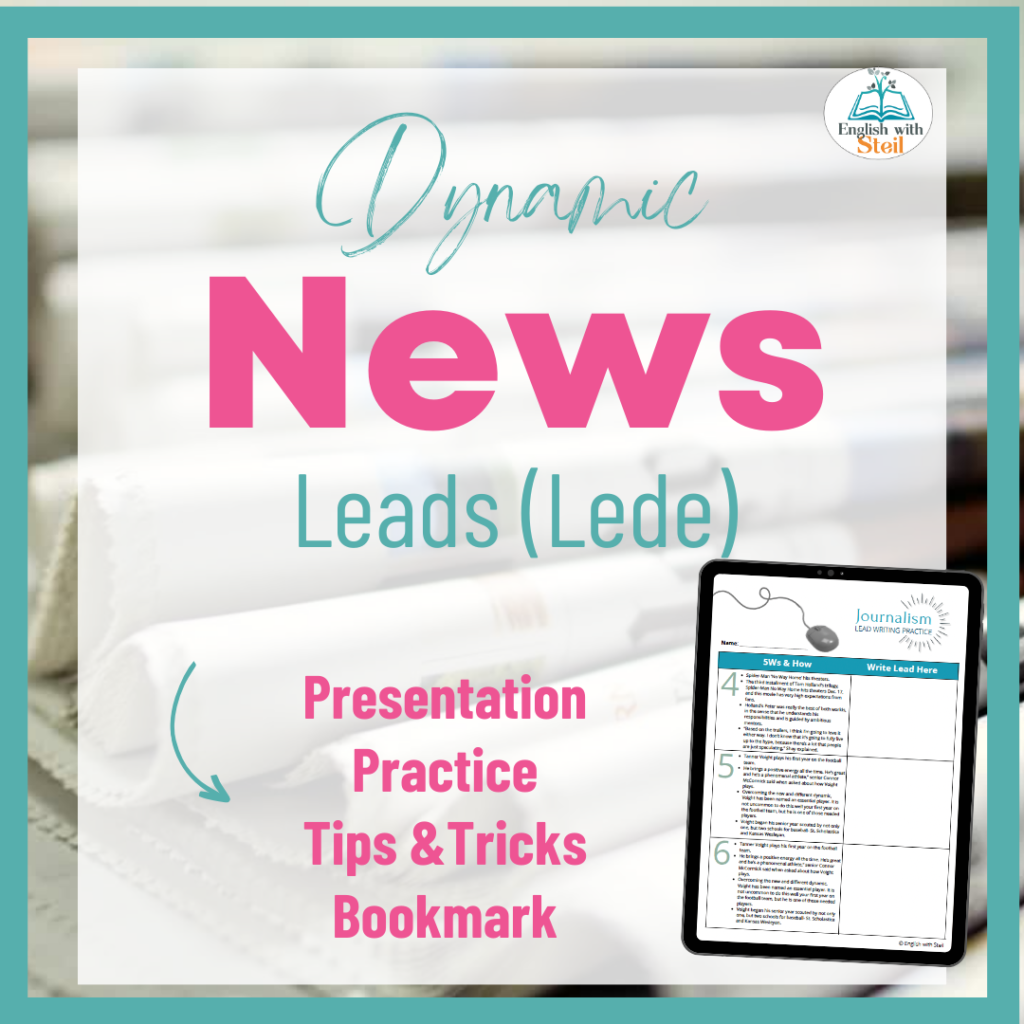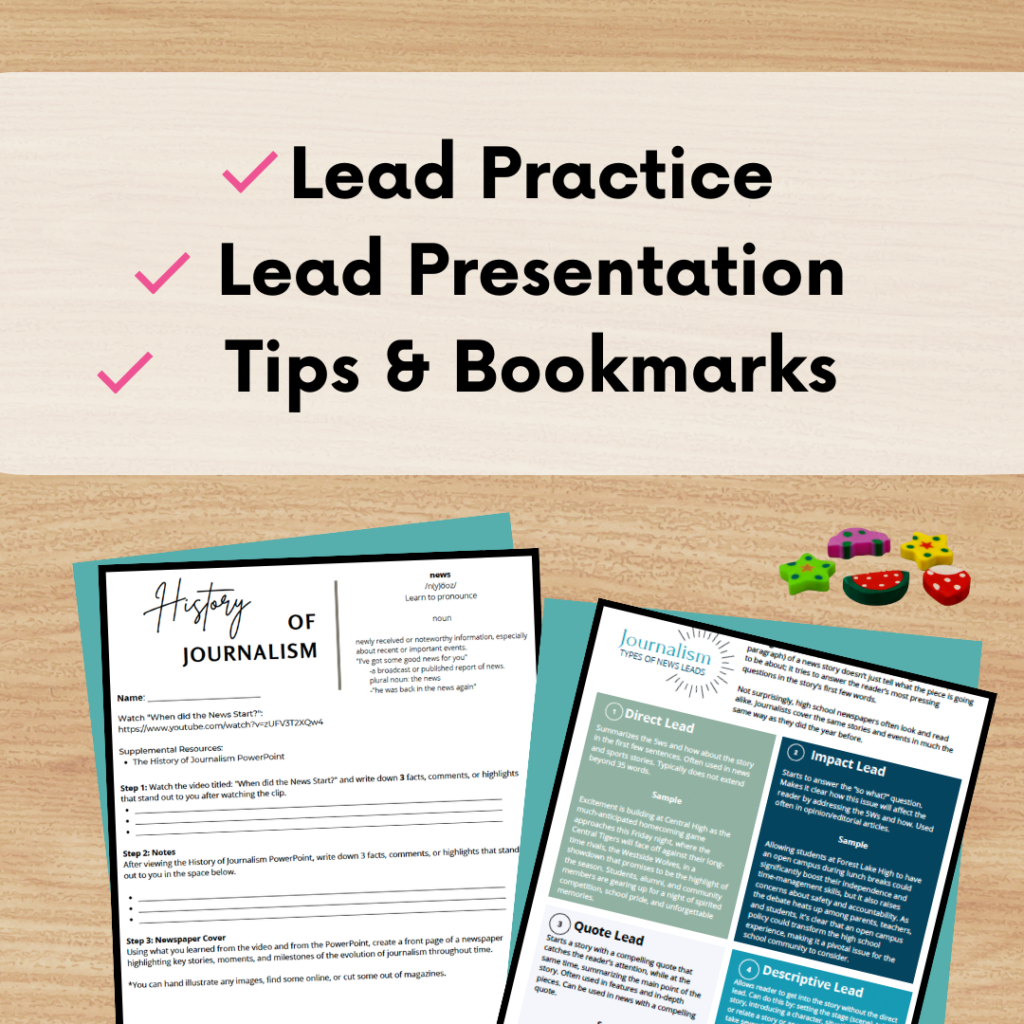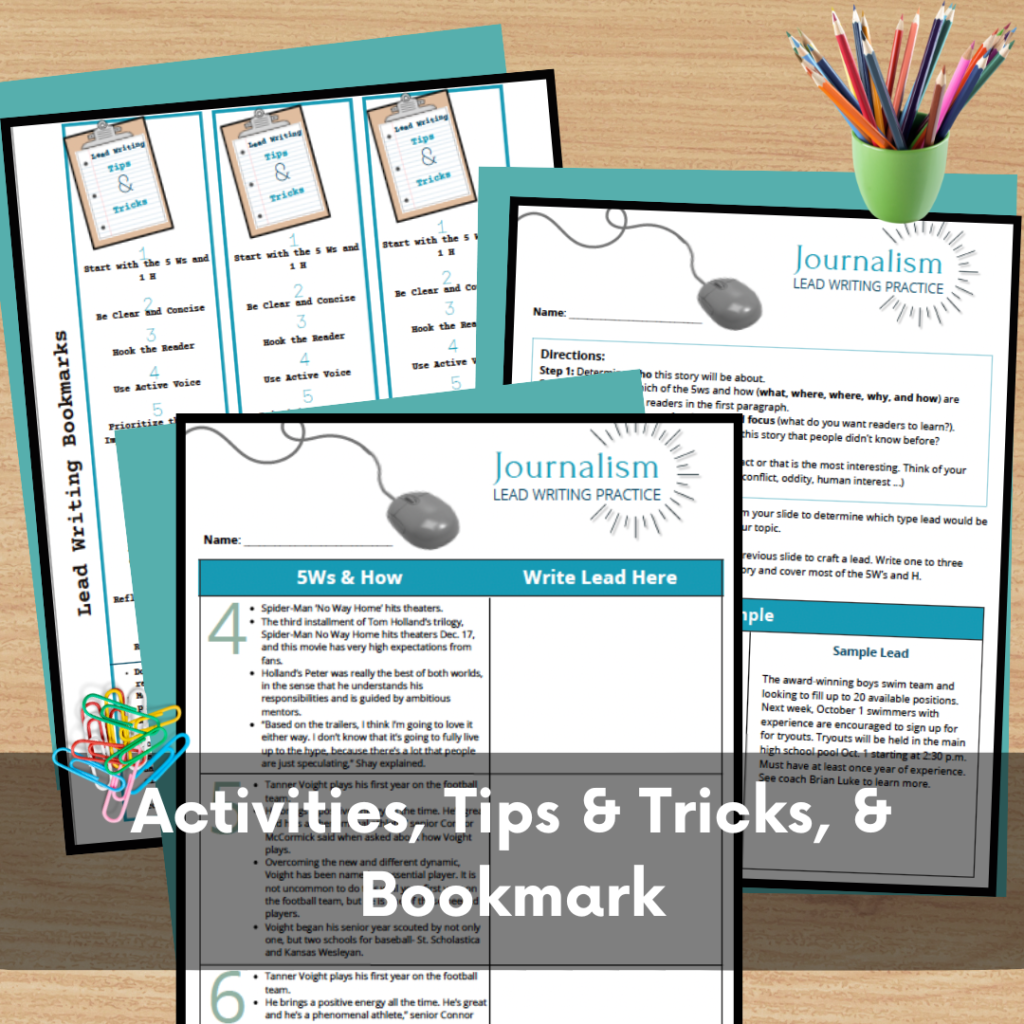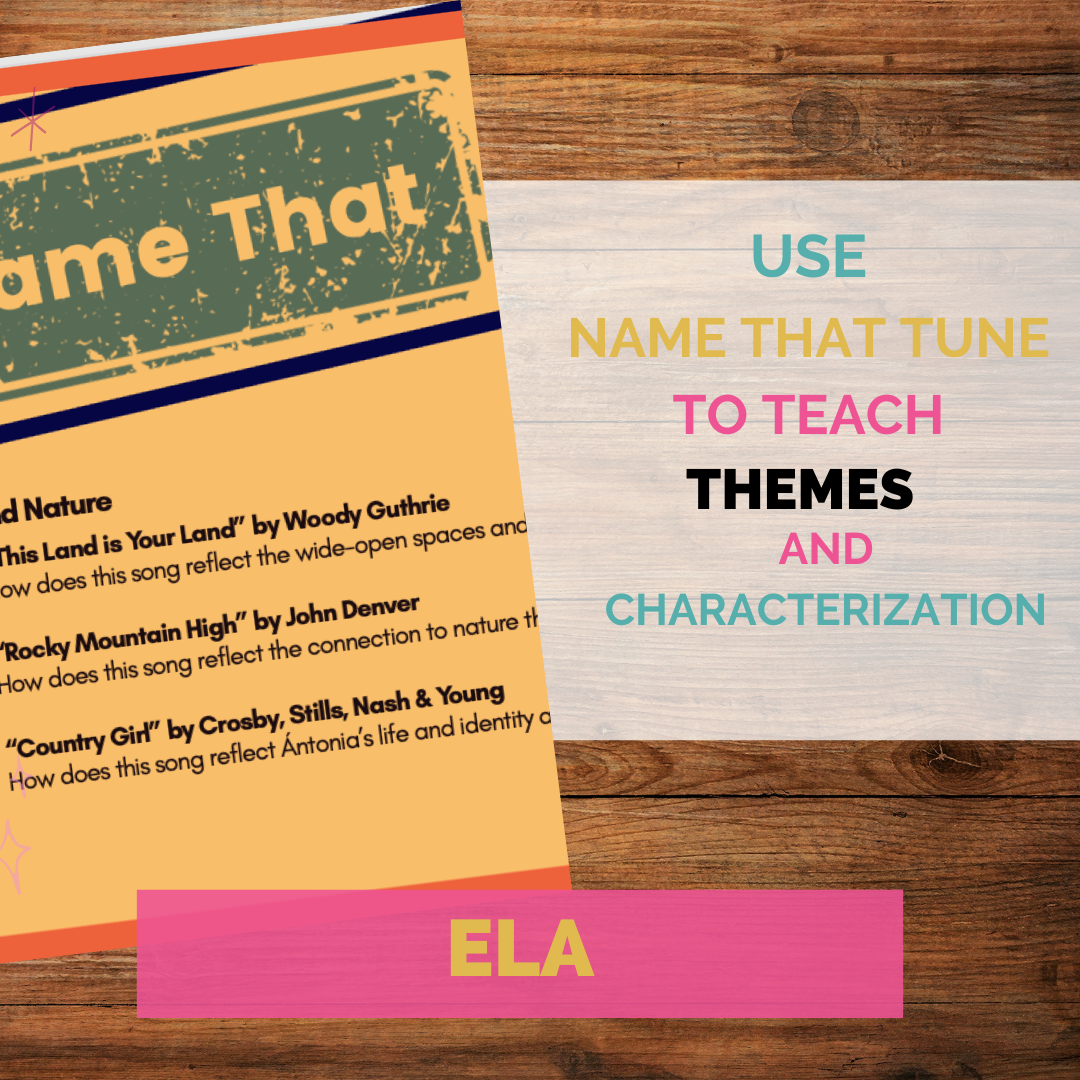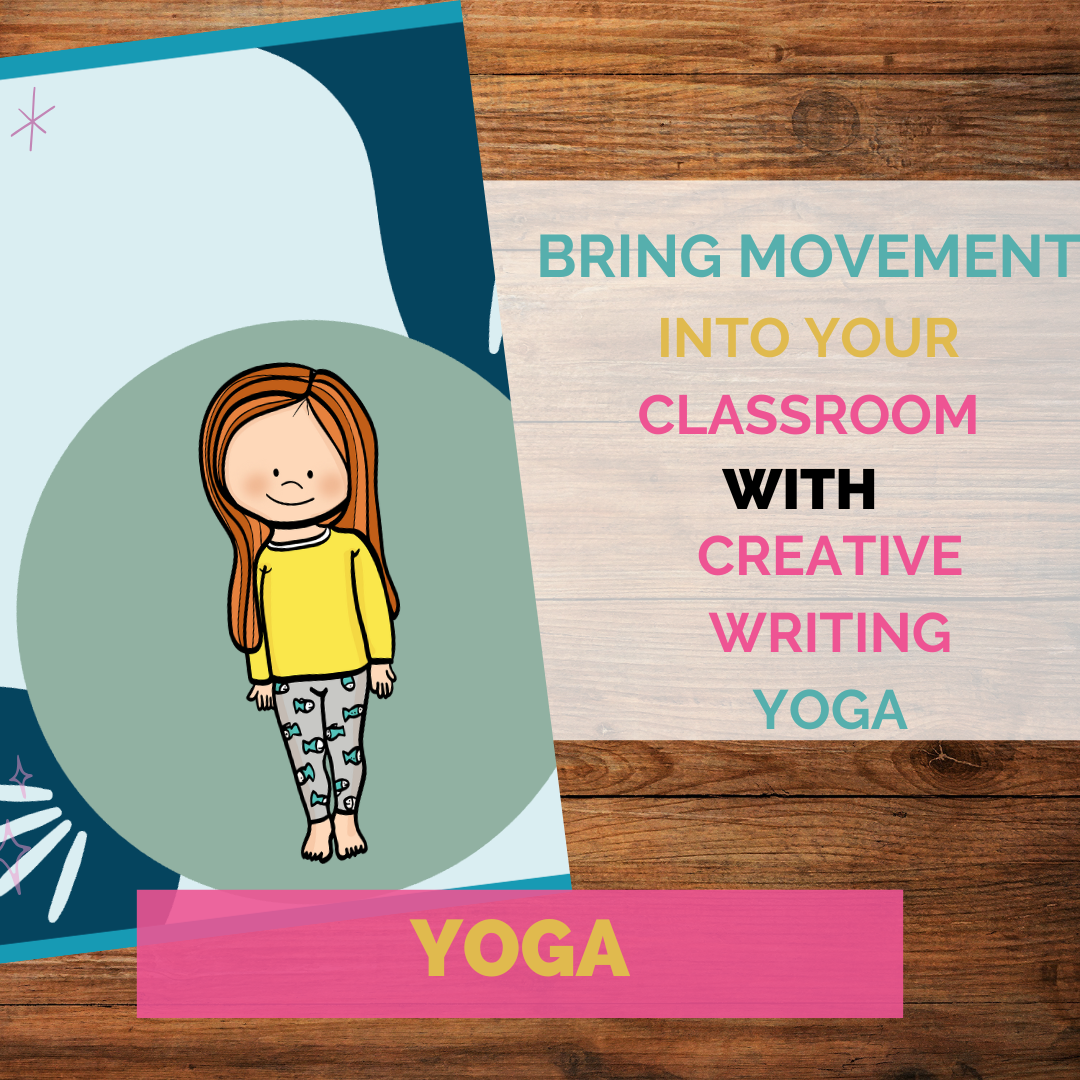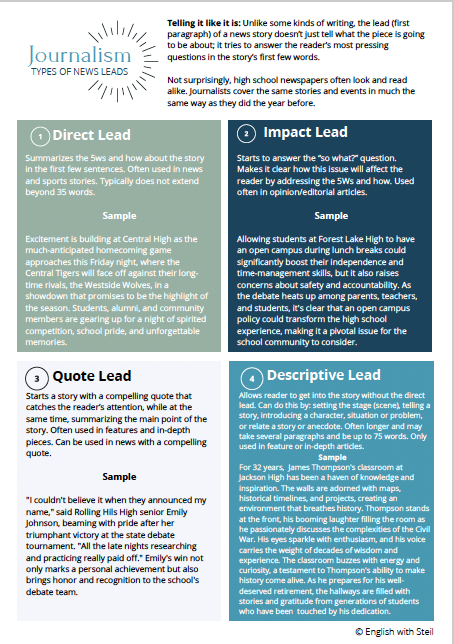
My social butterfly wings had me SOARING this past weekend, and it just made me even more excited for what the new school year has in store! If you’re in the U.S., did you celebrate Labor Day?
Here’s something that might be a hot take for you: if you want to capture your students’ attention and guide them to writing captivating articles, you can’t just be a passive observer. 
You have to be one part teacher and one part social butterfly to connect with your students and paint the transformation for them. Today, I want to share some tricks and tips for writing killer newspaper lead paragraphs that will grab readers from the get-go.
What Makes a Great Lead?
A lead paragraph is the gateway to your article. It’s the hook that grabs your readers’ attention and makes them want to read more. Here are some key elements of a strong lead:
- Conciseness: A good lead is brief but packed with information. It should give readers the essentials without overwhelming them.
- Clarity: Your lead should be clear and easy to understand. Avoid jargon and complex sentences.
- Relevance: Make sure your lead is directly related to the main point of your article.
- Intrigue: A touch of mystery or a compelling fact can pique readers’ curiosity.
1. Start Strong
Your lead needs to grab attention immediately. Use powerful, impactful words to draw the reader in and make them want to know more. A strong opening sentence sets the stage for the rest of your piece.
2. Answer the 5Ws and H
Make sure your lead addresses the key questions: Who, What, When, Where, Why, and How. This is especially important in news writing, where readers need the facts upfront.
3. Be Clear and Concise
Avoid long, meandering sentences. Your lead should communicate the essence of your story in as few words as possible while remaining engaging.
4. Appeal to Emotion
Evoke an emotional response by focusing on the human aspect of your story. Whether it’s joy, sadness, or curiosity, tapping into emotions keeps readers invested.
5. Use an Intriguing Question
Starting with a thought-provoking question can engage readers by sparking curiosity and encouraging them to seek answers in the rest of your article.
6. Create a Sense of Urgency
Give readers a reason to keep reading now. Use words or phrases that highlight the timeliness or importance of the story, such as “breaking news” or “just revealed.”
7. Avoid Clichés
While some phrases may feel familiar, they often make your writing sound generic. Stay original and avoid overused expressions to keep your lead fresh.
8. Use a Surprising Fact or Statistic
Shocking or unexpected facts immediately catch attention. Use a fact that’s relevant to your story and follow it up with why it matters.
9. Be Specific
Vague leads can confuse readers or fail to capture their interest. Include specific details to give your story credibility and depth from the start.
10. Set the Scene
Use descriptive language to transport readers into the story. Whether it’s a bustling city street or a quiet courtroom, painting a vivid picture helps immerse your audience.
11. Start with Action
An action-oriented lead creates energy and immediacy. For example, “The crowd erupted in cheers as the underdog team clinched the championship.”
12. Incorporate a Quote
A powerful or memorable quote can add authenticity and drama to your lead. Just make sure it’s directly relevant to the story.
13. Use Humor (When Appropriate)
Humor can make your lead stand out, but it’s important to consider the context and audience. When done well, a witty lead can set a playful tone for the piece.
14. Highlight the Conflict
Conflict drives most stories, so spotlighting it in your lead is a surefire way to grab attention. Let readers know what’s at stake.
15. Keep Your Audience in Mind
Tailor your lead to your audience’s interests and expectations. Consider their level of knowledge and what would most likely appeal to them.
16. Ask a “What If” Question
“What if?” leads encourage readers to imagine scenarios or outcomes, sparking curiosity and engagement. For example, “What if your morning coffee could save the planet?”
17. Don’t Bury the Lead
Get to the point quickly. Avoid placing the most important information deep in your story. Readers should understand the main idea within the first sentence or two.
18. Experiment with Narrative
A narrative or anecdotal lead can be highly engaging. Start with a short, intriguing story that ties directly to your main topic.
19. Make It Relatable
Connect with your readers by writing a lead that reflects common experiences or emotions. Relatability builds a bridge between you and your audience.
20. Revise, Revise, Revise
The first draft of your lead is rarely the best. Take time to revise and refine it until it’s as compelling as possible. Read it aloud to ensure it flows naturally and resonates with readers.
Final Thoughts
Crafting a compelling lead paragraph is crucial for any writer. It sets the tone, hooks the reader, and provides a solid foundation for the rest of the story. By using concise, clear, and intriguing leads, you can capture your audience’s attention and draw them into the narrative. Whether you’re teaching students or writing yourself, remember that a strong start can make all the difference. Embrace these tips and tricks to help your budding journalists master the art of the perfect lead, ensuring their stories are engaging and impactful from the very first sentence.
Let’s make this year the best one yet!
